The Kaveri Refresh 'Godavari' Review: Testing AMD's A10-7870K
by Ian Cutress on June 1, 2015 11:59 AM ESTProfessional Performance: Linux
Built around several freely available benchmarks for Linux, Linux-Bench is a project spearheaded by Patrick at ServeTheHome to streamline about a dozen of these tests in a single neat package run via a set of three commands using an Ubuntu 11.04 LiveCD. These tests include fluid dynamics used by NASA, ray-tracing, OpenSSL, molecular modeling, and a scalable data structure server for web deployments. We run Linux-Bench and have chosen to report a select few of the tests that rely on CPU and DRAM speed.
C-Ray: link
C-Ray is a simple ray-tracing program that focuses almost exclusively on processor performance rather than DRAM access. The test in Linux-Bench renders a heavy complex scene offering a large scalable scenario.
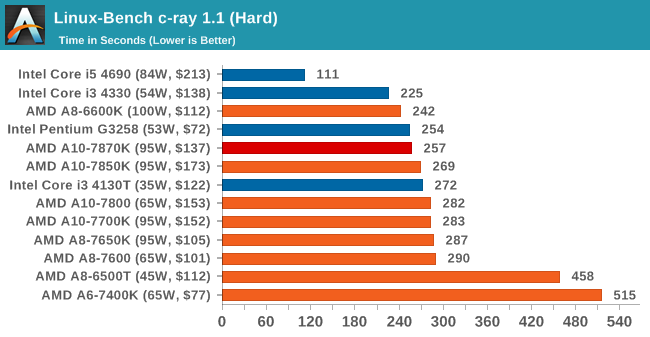
NAMD, Scalable Molecular Dynamics: link
Developed by the Theoretical and Computational Biophysics Group at the University of Illinois at Urbana-Champaign, NAMD is a set of parallel molecular dynamics codes for extreme parallelization up to and beyond 200,000 cores. The reference paper detailing NAMD has over 4000 citations, and our testing runs a small simulation where the calculation steps per unit time is the output vector.
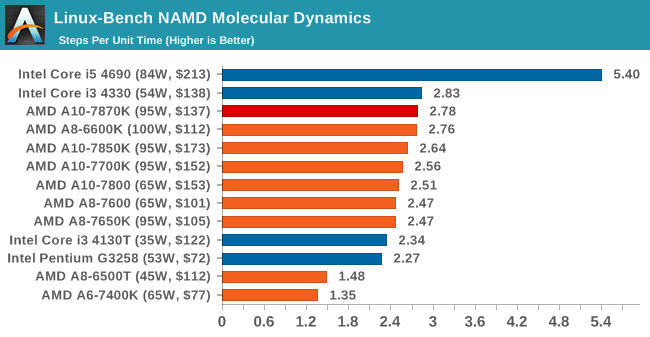
NPB, Fluid Dynamics: link
Aside from LINPACK, there are many other ways to benchmark supercomputers in terms of how effective they are for various types of mathematical processes. The NAS Parallel Benchmarks (NPB) are a set of small programs originally designed for NASA to test their supercomputers in terms of fluid dynamics simulations, useful for airflow reactions and design.
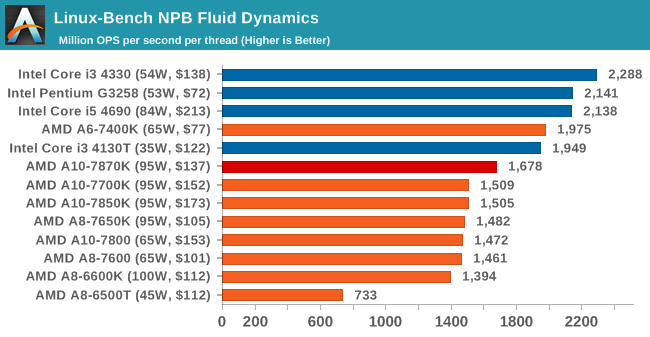
Redis: link
Many of the online applications rely on key-value caches and data structure servers to operate. Redis is an open-source, scalable web technology with a strong developer base, but also relies heavily on memory bandwidth as well as CPU performance.
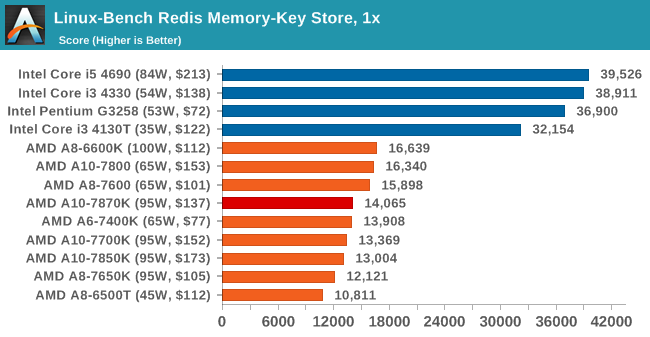

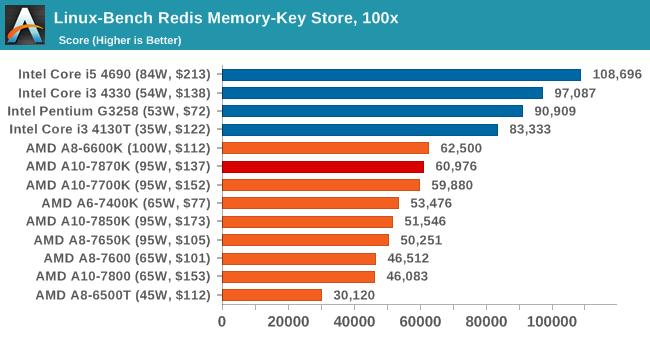










140 Comments
View All Comments
nikaldro - Monday, June 1, 2015 - link
It's funny how most people don't know that they have 2000W washing machines, yet they whine about stuff like this.Oxford Guy - Monday, June 1, 2015 - link
Don't forget the vacuum cleaner amp wars.RafaelHerschel - Tuesday, June 2, 2015 - link
I don't have a washing machine in my livingroom or office and I don't use my washing machine as often as my PC's.Less power means less heat and less noise. It also means better performance in a (very) small case. It also means a more modest PSU.
A fast i3 coupled with a GTX 960 in a Mini ITX case makes for small, potentially quiet system.
Oxford Guy - Monday, June 1, 2015 - link
CPUs and GPUs should have three ratings:1) Standby
2) Average (when in use) (with an industry-wide set of benchmarks)
3) Maximum (also industry-wide benchmarks)
barleyguy - Tuesday, June 2, 2015 - link
My biggest energy usage is definitely climate control. I've switched to LED lightbulbs, and in my kitchen which was a flourescent grid, I'm using an LED rope light. But I have an 80,000 BTU natural gas heater, and 2000 watts worth of air conditioning. Those aren't on constantly since they use a thermostat, but the bulk of my utility bill is definitely represented there. My PVR computer is on 24 hours a day, but probably only represents a couple of dollars of energy usage.Oxford Guy - Monday, June 1, 2015 - link
AMD FX 8320E, Gigabyte UD3P motherboard with 8 phase power and VRM sinks = 161.98 tax incl.Intel i5 4690, MSI Z97 PC Mate (cheap 3 phase + doubler) = $280.78 tax incl.
difference = $118.8
You can use that money to get a refurb EVGA 750 Ti 2 GB from Newegg and have three dollars and 80 cents left over to get an extra 120mm fan for your EVO cooler (which you would get with either processor... no one should use a stock cooler).
Since that AMD processor and motherboard easily overclock to around 4.2 GHz on low voltage (1.27 - 1.3) with a moderate-quality cooler it would be very interesting to see the results in this article coupled with that "free" 750 Ti. Also, one can set the chip to "one core per module" in the BIOS of that motherboard in order to get much higher overclocks (higher voltage but much less heat output) for poorly-threaded applications like most games, which helps a bit to let the chip hang in there with an Intel i5, although you'll likely be GPU bound with a 750 Ti anyway.
Even if you decide to use the stock cooler for the Intel you're still saving some money with the AMD combo -- unless you are going to pair your chip with an expensive GPU.
jann5s - Monday, June 1, 2015 - link
am i the only one amazed by how Otten the 7870 is beat by the 7850???jann5s - Monday, June 1, 2015 - link
Often*Gigaplex - Monday, June 1, 2015 - link
No, you're not the only one. And that's not the only AMD chip it loses to.Cryio - Monday, June 1, 2015 - link
Yep. The results are way off. Both in CPU and GPU.